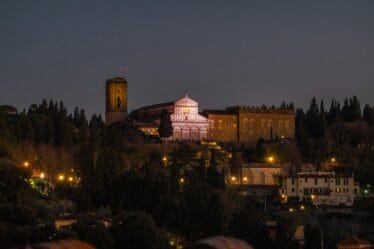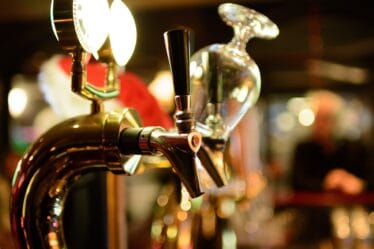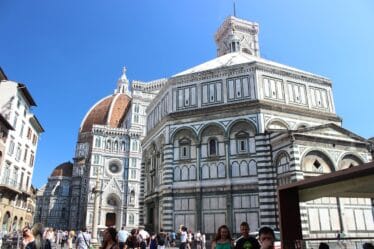

Did you know that modern chocolate was born in Florence? The story of how this sweet delicacy reached Europe and became part of Florentine tradition is as fascinating as it is little-known. The Birthplace of Chocolate is not just a catchy phrase — it’s a title Florence truly deserves. Let’s uncover how this delicious secret started right here in Tuscany.
Florentine Explorers and a Sweet Discovery
As many know, Florence was the birthplace or home of several renowned explorers such as Robert Dudley, Amerigo Vespucci, Paolo dal Pozzo Toscanelli, and Giovanni da Verrazzano. However, one of the lesser-known names, Francesco Carletti, gave Florence a sweet gift that would remain a Florentine secret for centuries.
In 1593, at only 17 years old, Carletti set sail from Livorno, unaware that his journey would make him the first private man in history to circumnavigate the globe — and that he would bring back the world’s most delicious treasure: chocolate.
If you’d like to discover this secret of Florence or other hidden treasures of the city, join our free walking tour of Florence, which runs every day. We also offer private tours — contact us via our website to learn more.
A Journey Around the World
Carletti’s voyage lasted around 17 years, beginning in Cape Verde, where he traded goods and transported slaves to the New World. From there, he reached Mexico and later Peru — then rich in gold — but fate had a sweeter plan.
While searching for gold, Carletti discovered chocolate, tasting it in the native way: with goat’s milk, vanilla pods, and chili. He described this recipe in detail in his diaries, explaining that the natives called it xoacrat, which Florentines later transformed into chocolate.
Until then, only Spaniards had tasted cocoa seeds, but they found them bitter and unpleasant. Carletti, on the other hand, was enchanted. He became addicted to the flavor and filled his ship with cocoa plants and beans before continuing his voyage — proof that Florence was truly becoming The Birthplace of Chocolate.
Pirates, Prison, and a Sweet Return
Carletti’s journey continued to Acapulco, the Philippines, and Japan, where he met the Jesuit friar Matteo Ricci. On his way back to Europe, near Saint Helena, tragedy struck — Dutch pirates led by Van Warwik attacked, robbing him of everything. He was later imprisoned in England.
Fortunately, Ferdinando I de’ Medici intervened, securing Carletti’s release after years in captivity. Returning to Florence around 1610, Carletti was penniless but still addicted to chocolate. The pirates had stolen his gold, but they couldn’t take away his cocoa beans — and that would change history.
To thank the Medici for his freedom, Carletti demonstrated how to prepare, cultivate, and consume chocolate. Within a short time, this exotic delight spread among Florence’s noble families, confirming once again that the city was The Birthplace of Chocolate.
The Medici and the Chocolate Embargo
In 1620, Spain imposed a chocolate embargo, restricting its trade. But Florence was already cultivating cocoa, thanks to Carletti’s decade-old plantations. This made Florentine chocolate unique and independent, a treasure unavailable elsewhere in Europe.
For over a century, chocolate remained an exclusive Florentine delicacy, appreciated only in the city’s aristocratic circles.
The Jasmine Chocolate Secret
By the 1700s, Florence became a major chocolate center. Grand Duke Cosimo III de’ Medici, together with the apothecary Francesco Redi, created a refined recipe combining chocolate and jasmine.
This blend was so precious that it became a state secret, shared only among the nobility. The recipe was transmitted orally and remained hidden for decades — another reason Florence deserves the title The Birthplace of Chocolate.
Only in 1720 was the recipe finally written down, preserved in the Historical Archives of Florence:
“Take roasted, cleaned and coarsely crushed 10 lbs. of fresh jasmine. Mix with the cacao, layer by layer, and leave to stand for 24 hours. Repeat ten or twelve times. Then add 8 lbs of good white sugar, 3 ounces of vanilla, and 6 ounces of cinnamon. Be careful not to overheat the stone, or the aroma will be lost.”
Florence and Chocolate Today
Even today, Florence continues its proud chocolate tradition. Renowned chocolatiers such as Slitti, winner of over 170 international awards, including in 2022, honor this centuries-old passion — especially for dark chocolate.
Conclusion: Florence, The Birthplace of Chocolate
From Carletti’s adventurous voyage to the Medici’s secret recipes, the story of chocolate in Florence is one of exploration, innovation, and passion. When you visit Tuscany, remember that every cup of hot chocolate or praline you taste has roots in The Birthplace of Chocolate — Florence.
🔗 Suggested external links:
- History of Chocolate – Smithsonian Magazine
- Visit Florence – Official Tourism Site
- Medici Dynasty and Legacy
- Florence Free Tours – Discover Florence



